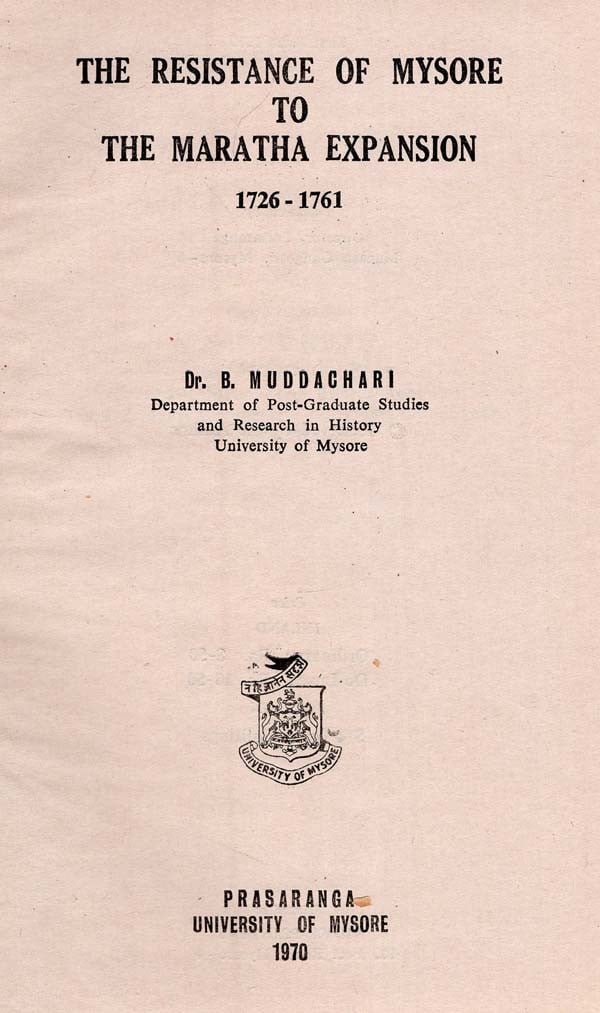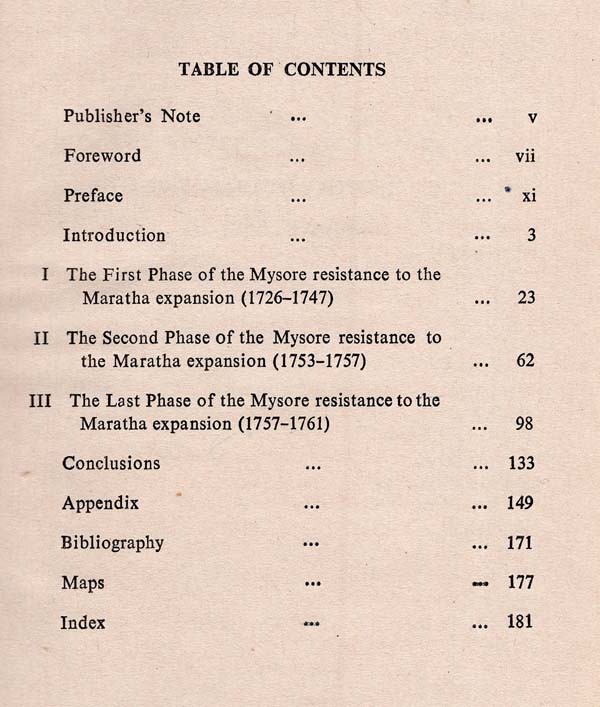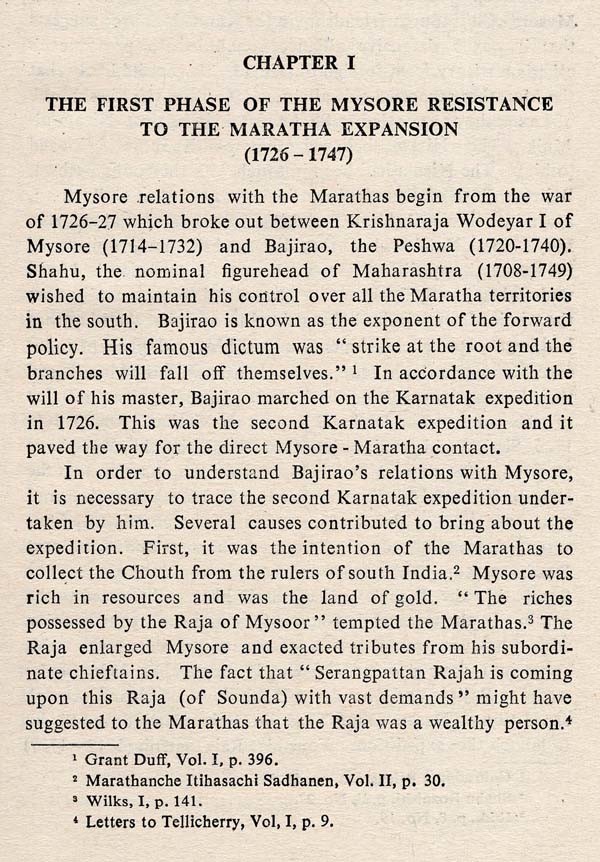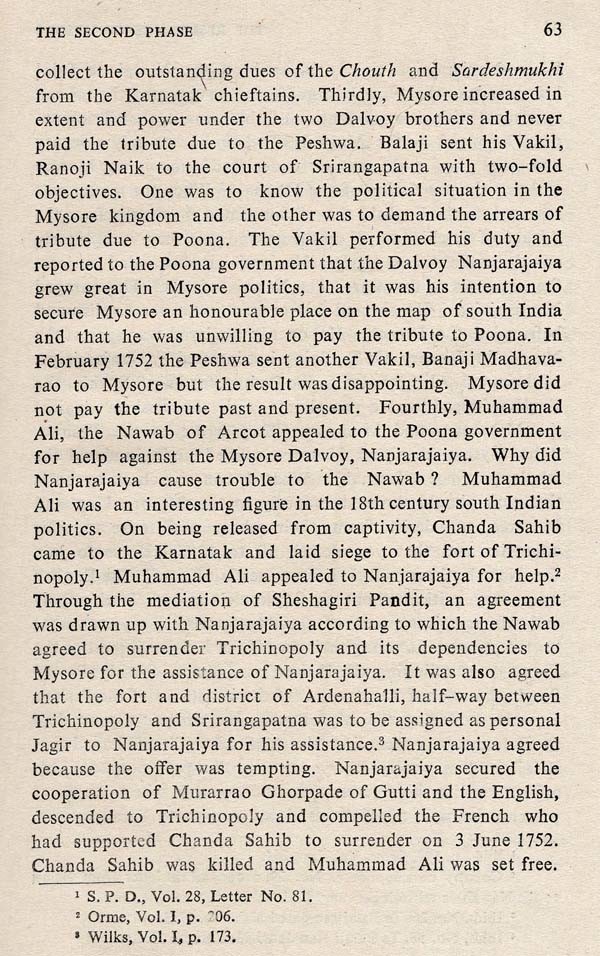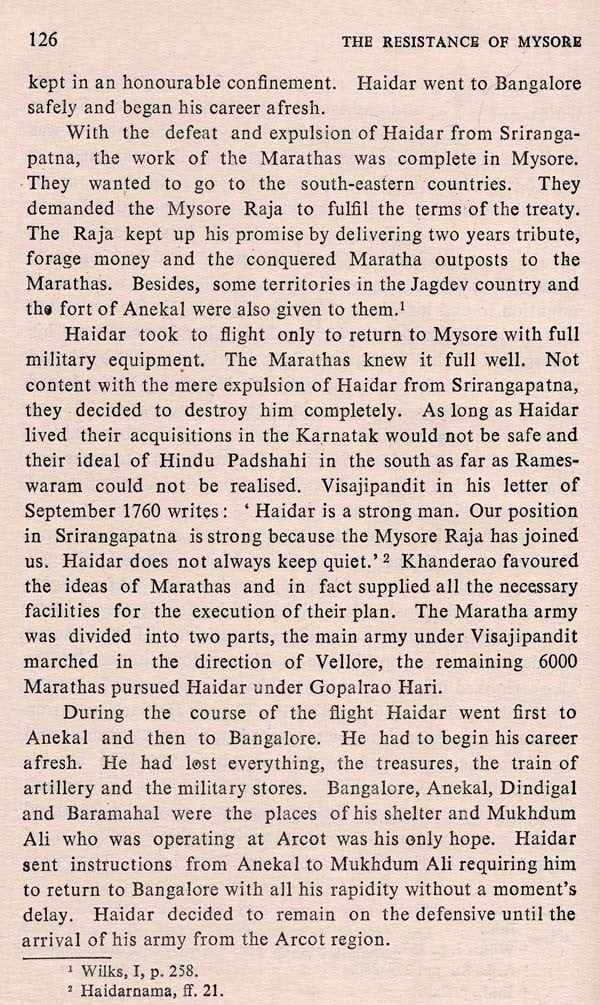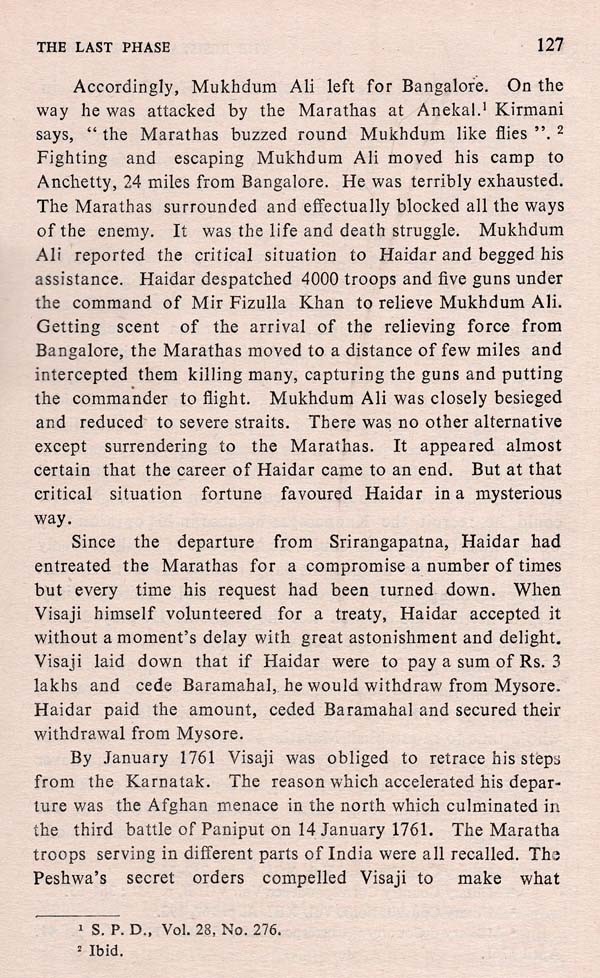Foreword The eighteenth century witnessed a drama of power-politics in India when three diverse elements, namely the Mughals, the Marathas and the Europeans contested for supremacy over the entire country. Of them the Marathas were the most dominant, for they had succeeded in disturbing the existing balance, and. in tilting it in their favour. Although the north with its historical settings and with the prospects of winning its imperial throne at Delhi counted most with the Marathas, the south was never neglected, because it was the main source for financing their campaigns in the north, and because they considered it as their sacred patrimony ever since Shahaji acquired Bangalore as his jagir. Consequently no year passed when they did not appear in the south to replenish their treasury and to assert their claim to the exaction of chauth and sardesmukhi. Mysore was the main target of their attack, both because it was rich in resources and extensive in territories, and because its complete subjugation was an impossible task. Ever since the rise of the Marathas, Mysore was powerful enough to resist all their attempts to reduce it to the level of a tributary. Thus all through the century, the Marathas and the Mysoreans are seen perpetually involved in an inconclusive struggle.
The efforts of the Marathas to make Mysore an appendage of their kingdom was neutralised to a great extent by yet another factor, namely the ambitious designs of the Nizam who claimed legal suzerainty over the entire peninsula by virtue of the fact that he was the Mughal Viceroy of the region.
Preface The resistance of Mysore to the Maratha expansion began in 1726 when Bajirao invaded Mysore. The decline of the Mughal empire was an occasion for both the Mysoreans and the Marathas to fill up the political vacuum in the Karnataka. They fought with each other for four decades for power. Mysore which was a powerful state stood as an obstacle to the Maratha expansion in the Karnataka and likewise the Marathas arrested the progress of the Mysoreans in the northern region of the Karnataka. Both of them wanted to overpower each other. Consequently, both the powers were involved in unending rivalries and relentless wars.
No consistent attempt has hitherto been made to discuss the resistance of Mysore to the Maratha expansion during the period of the Peshwas. Scholars on Maratha history such as Grant Duff, Rajawade, Sane, Parasnis, Ranade have discussed the Maratha activities in the north where it was more spectacular but very little attention was paid by them to the Maratha activities in the Karnataka. Sardesai has dealt with the Maratha expansion in the south from the angle of the Marathi sources and therefore he presents only one side of the picture. Sources pertaining to this study are also available in English, Persian and Kannada languages. Scholars on Mysore history like Wills and Hayavadana Rao who have examined the political and military aspects of Mysore history have not thrown full light on the relations of Mysore with the Marathas. Wilks was the British Resident at the court of Mysore (1803-1808) and his work entitled, "Historical Sketches of the South India in an attempt to trace the History of Mysore" was written in 1810.
Introduction A background to the event that preceded the closer contact of the Mysore rulers with the Marathas seems to be necessary. The breakdown of the Mughal empire after Aurangzeb's death (1707) created a great confusion in south India. It offered a fine opportunity for the enterprising governors to assert their independence and to look upon their offices as hereditary. Nizam-ul-Mulk in the Deccan and Sadatulla Khan in the Karnataka were independent in all except in name. Likewise, the Maratha chieftains owed no allegiance to their central authority at Poona. Sambhaji of Kolhapur, Murarrao of Gutti and the Marathas of Tanjore were all independent in their own respective principalities. Thus the rise of the adventurous chieftains to the highest ranks of power has been the main feature of this age. Another important feature of the early eighteenth century is that in both the Maratha and Mysore courts the ministers became all powerful and the sovereigns were thrown into the background. The Peshwas usurped all powers from Rajaram's descendants and Shah was only the nominal figurehead of Maharashtra¹.
**Contents and Sample Pages**
